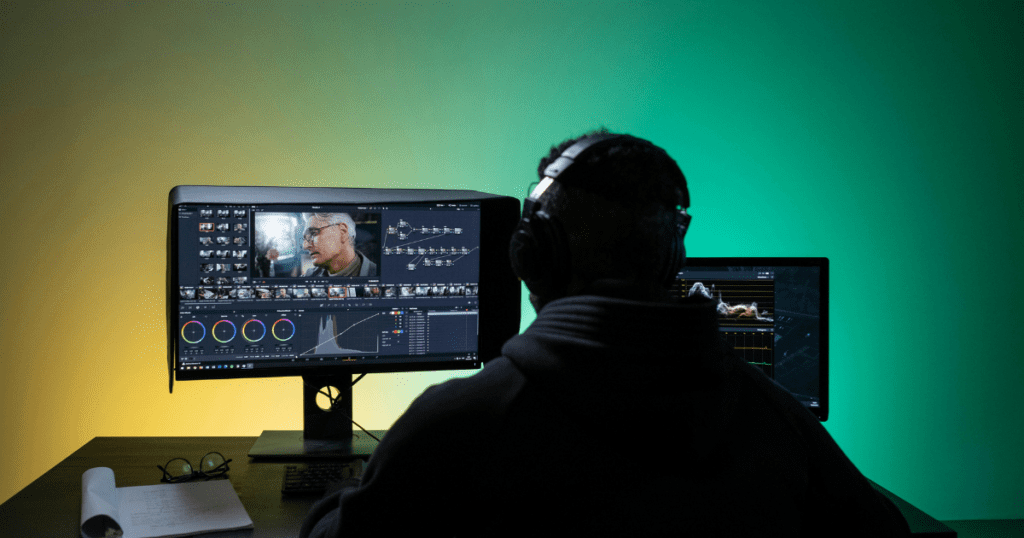Post production is the final stage of video production. After all the hard work of pre production and filming, the end is in sight… but there is still a lot to get done. Are you getting ready to enter post production for a video or film? Are you looking to hire a company for post production but don’t know what to expect? Here is a guide to video post production. Different people and companies have different workflows, but this is an outline of what you can expect, or what you should be planning to do if you are handling post production yourself.
First, create a rough cut.
Think of the rough cut of a video as being the rough draft of a written work. You’re getting everything into place so you can see your vision come to life, but it’s far from done. To create a rough cut, you (or the person you’ve hired) will have to sort through all your footage, choose the best takes, cut it up, and splice it together. If you’re doing your video post production yourself, you’ll be able to work according to your vision. If you’re hiring a company, you’ll need to make sure you’ve clearly communicated your needs to your point of contact.
Don’t worry about things like color and music during your rough cut. It’s okay if you want to add a LUT or a temporary score if that helps you work, but ultimately you should be focused on creating the best rough cut you can. If you have a team or collaborators, this is the right time to ask them for feedback. If you’ve hired a video post production company, this is the stage where they will collect feedback from their internal team before getting your thoughts and notes on the video.
Next up, the picture lock.
The picture lock is the stage of video post production where your edit is “locked in.” This means all feedback has been incorporated and the rough cut has been tightened up until it’s ready to go. Every single moment should be in place before it moves onto the next phase of post production. Even though we aren’t quite to the sound mix yet, it’s important to make sure that any voiceovers you may need are either recorded or timed out to make sure it works with the visuals of the video. For VFX that are coming later in the process, make sure you have a placeholder so that the timing works out.
That brings us to the sound mix.
Once you’re happy with the edit, it’s time to move on to sound mixing. If you’ve hired a professional and provided them with a clear vision, you can sit back and relax until they’re ready for notes. If you’re doing the sound mix yourself, there’s a lot to think about. The sound mix includes every sound you hear in your video; dialogue, foley, sound effects, voiceovers, and music. You will need to familiarize yourself with sound mixing software. There are a lot of good tutorials on Youtube that you can check out if you’re new to this.
You may need to record more sound at this stage in video post production. For example, you may need to rerecord dialogue to get a “clean” sound, or you may need to record foley sound effects. For music, you will either work with a composer or find music that is available for commercial use. You can either purchase music licenses or use royalty free music to complete your sound mix.

Add visual effects.
The next step of video post production is to add visual effects. This could range from small graphics to much larger scale effects. Depending on the scale of the effects, you might need to hire someone who specializes in VFX. For our debut horror short film, Biters & Bleeders, we were lucky enough to work with COSA VFX (they worked on Stranger Things!) and we never could have pulled it off without their incredible work.
Animation is a common visual effect, and this can also include adding text, transitions, or any other visual effects your video needs. This can also include title and end cards for your video.
Onto color correction and color grading!
Color correction is the process of getting the color across shots consistent and natural looking. Not all shots will look the same straight out of the camera, so this is your opportunity to get levels consistent and the color looking good. Then, there’s color grading. Color grading is when you take it a step further and make stylistic choices about the color of your video. Some people buy LUTs to use for this (we have some available on Etsy) while others DIY it. You should be thoughtful about color, but you should also keep in mind that it’s a pretty subjective process and ultimately you (or the client) just needs to be happy with the look of the video.
You’re done!
Now all you need to do is hit export and get your video ready to post, share, or send to your client! Congratulations on completing video post production!

Leave a Reply